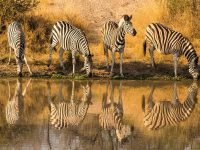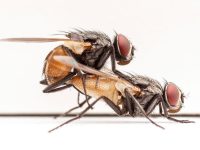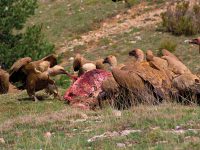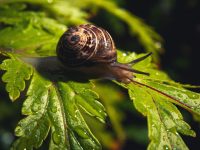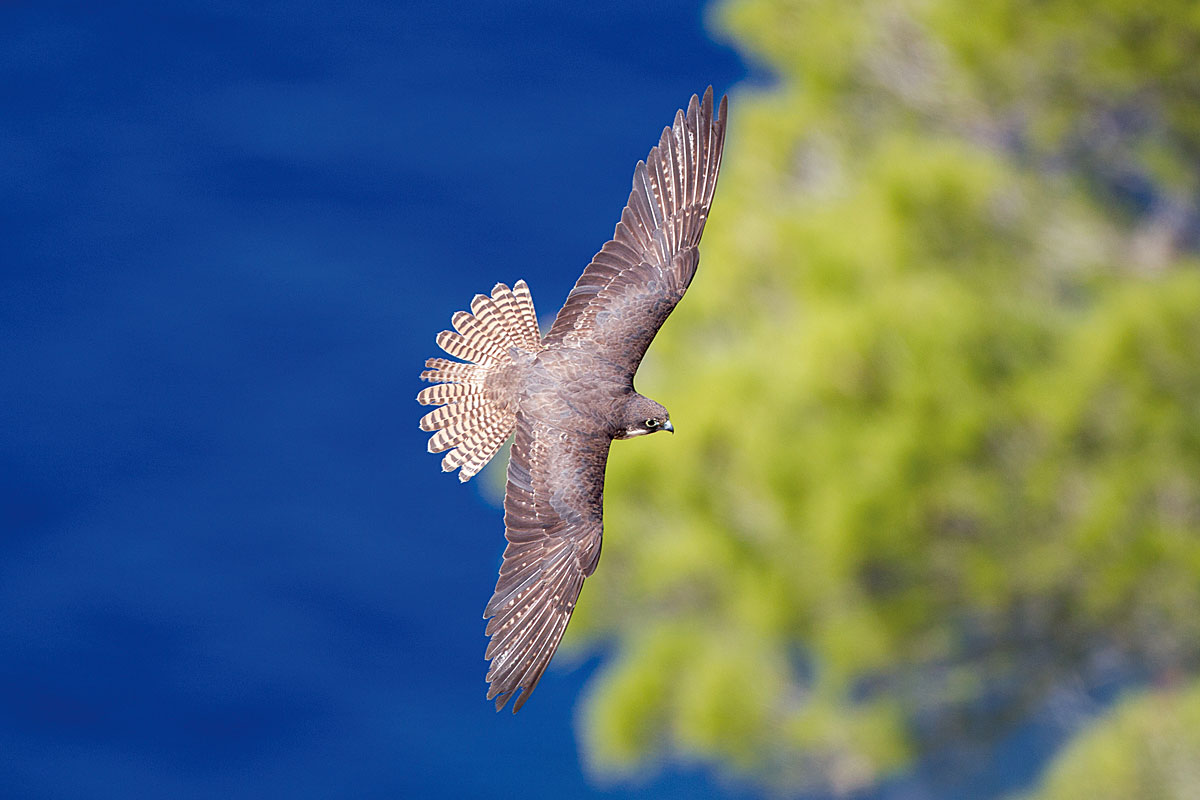
Planetary geography and bird migration
«Mobile organisms occupy territories with abundant resources, take advantage of them in order to breed, and leave when unfavourable conditions occur. Migration is nothing more than that»
It is well known that seasonal climate alternation in mid and high latitudes of the Earth occurs due to the axial tilt. If the axis was perpendicular to the elliptic, the angle of incidence of solar radiation and the relative length of day-night cycles would not change. Consequently, there would be no variations in the relative intensity of the sun’s rays on the surface throughout the year, nor seasonal weather cycles, like in tropical latitudes, where these variations are minimal. Animal migrations, and birds’ significantly, are an extraordinary adaptation to this yearly cycle, with a biological cycle of the same length. In general, northern birds devote the long and rather temperate days of the summer to take advantage of the important local primary production directly – herbivore or granivore birds – or indirectly – predators and apex predators. In spring and summer there is more food and more hours of light to find it. Many birds are insectivorous in spring and become frugivorous in autumn to exploit vegetable reserves. They try to follow the great biomass imperative: turn as much organic matter as possible into the biomass of the species, fattening and breeding, growing and multiplying. Avoiding becoming other species, of fungi or bacteria biomass, that is, avoiding being eaten or dying, is also part of this imperative – the great principle of the biosphere. Although it is unavoidable, individuals feel (we feel) truly disgustedsurrendering our body to other species. Therefore, mobile organisms occupy territories with abundant resources, take advantage of them in order to repeatedly duplicate their chromosome and its whole wrapping in the form of offspring, and temporarily leave when unfavourable conditions occur. Migration is nothing more than that.
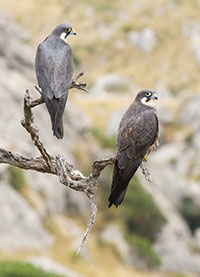
Eleonora’s falcon is a Mediterranean endemism whose biology is linked to migration. Unlike other birds of prey, Eleonora’s falcon is a gregarious, colonial species. / Sebastià Torrens
There are more geographic elements conditioning this spectacular ornithologic phenomenon: the distribution of land area in the Palaearctic hemisphere is one of the most important. The large-Siberian landmass, where every year hundreds of millions of birds find favourable conditions for nesting does not correspond to the equivalent geographical longitude in tropical and southern landmass, in Africa. Therefore, the most common autumn migration is not north-south (and the opposite direction in spring), but north-east to south-west, at least for what concerns our latitude. That brings, at the end of the summer and during autumn, a massive flow of birds to the Mediterranean. It should be pointed out that the autumn migration is larger than the one in spring: not only the adult birds who arrived months before depart to the south, there is also all the offspring they managed to produce. The travel and the winter will take a toll, and the following spring, only the survivors will come back.
Migrant birds as energy source
Therefore, in autumn many millions of birds arrive to the Mediterranean. Not surprisingly, those who live near the shore, all around the Mare Nostrum, have welcomed the phenomenon as seasonal manna, from the biblical quail rain and the warbler killings in Cyprus, to Majorca’s thrush colls, Valencian paranys or indiscriminate bird carnages in Malta. Their use became abusive, and only cultural and legal changes, not unchallenged, managed to put a limit to them in the last years.
We Mediterraneans have not invented anything! Such abundance of flying protein is essential for the existence of an almost endemic bird of prey of the Mediterranean riverbanks specializing in catching them: Eleonora’s falcon, Falco eleonorae, one of the most interesting and compelling bird species in Spanish wildlife, known as falquinyol by some locals, a delicate diminutive worth recovering for print.
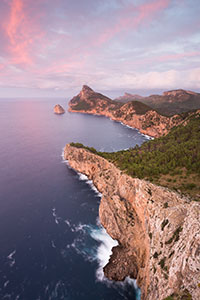
The cliffs of the rough shores of Majorca host one of the most important colonies of Eleonora’s falcons. / Sebastià Torrens
The most important part of the diet of Eleonora’s falcons are small migratory birds coming from the north. It affects their whole biological cycle: they nest in islands and rocks where migration is massive, delay reproduction until autumn, when there will be thousands of northern migrants, and adopt colonial behaviour, that is, they do not depend on local resources, so they do not need to be territorial. To complete their relationship with the great journeys of birds, once they have bred, they start a colossal migratory journey that takes them to Madagascar, the details of which have only been fully known in very recent years, thanks to technological advances such as satellite monitoring.
The life cycle of Eleonora’s falcons
April marks the arrival of the bird to European islands. The hawks visit the cliffs and islands where they will breed, but they soon spread over the territory, sometimes hundreds of kilometres from their nesting locations, travelling also inland: birds from the Columbretes Islands and Sa Dragonera, marked with satellite emitters, have been found all over the regions of Valencia, Castille, Andalusia and the French Midi. At this time of year, they are eminently insectivorous and capture flying beetles, dragonflies, butterflies, cicadas and even flying ants. When ants swarm at dusk, tens of falcons can be seen gliding low, clawing at the air every few seconds in order to catch tiny nutritious insects. Quite a show. Also a part of their diet are small birds (young swifts. quite fast but not as skilled as adult specimens, are easy prey) and probably chiroptera, because falcons often adopt twilight habits. However, they always hunt in the air, and captures on the ground or on vegetation have never been documented.
«The most important part of the diet of Eleonora’s falcons are small migratory birds coming from the north. That conditions all its life cycle»
In July, the colonies are occupied and the heat period begins. The preference of falcons for the most beautiful and spectacular landscapes in the country is worth noting: the northern shores of Majorca, frfom Formentor to Sa Dragonera, the islets of Cabrera, Tagomago, the Amunts in Ibiza and Es Vedrà host the 630 pairs that nest in the Balearic Islands. Around sixty nest in the Columbretes. In the west there are a few other colonies: in Salé and Essaouira (Morocco) and in the Canary islands (around 275 pairs). By the way, the Essaouira islands colony (known for the Portuguese as Mogador) has become one of the most important in the world, with 800 nesting pairs, thanks to an effective recent protection and to the decreased human presence in the big island (formerly a prison). We’ll explain below. To the east, there are colonies in several Sardinian and Sicilian islets, some pairs in Adriatic islands and, especially, in the Aegean archipelago, where most known populations nest. Therefore, with the exception of the aforementioned Atlantic locations, the species is unique to the Mediterranean, or rather, Mediterranean islands, and the total population is estimated between 13,000 and 14,000 pairs.
Nevertheless, we should state that outside of the breeding season they appear in close continental regions, and have been considered wandering in countries as far away as Sweden and Finland.
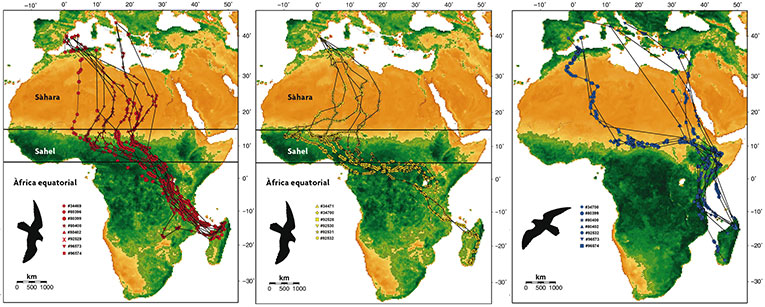
On the left, eight autumn migration routes followed by eight adult Eleonora’s falcons. The paths corresponding to the same individual at different years maintain the same symbol. The background represents the Normalized Difference Vegetation Index (NDVI) for November 2009. Centred, autumn migration routes of six young falcons. The background represents the NDVI for November 2009. On the right, nine spring routes of seven Eleonora’s falcons. The background represents the NDVI for April 2010. / Map extracted from Mellone et al., 2013
The lay, as a rule, is two eggs (rarely three), which will hatch the following September, when food is more abundant. It is thus the Palearctic bird species with the latest reproduction. Then falcons are extremely active, exhibiting continuous stunts, and strive to capture migrants over the sea, with a cooperative hunting technique, exceptional among birds of prey. They can attack prey near the waves, or many hundreds of meters high. Indeed, for a small migratory bird that has left the northern lands and has been forced to undertake a sea voyage of more than one hundred kilometres, approaching the islands and being received by such a committee must be unpleasant. That’s the inconvenient of the biomass imperative and a harsh process of natural selection!
Falcons are especially active in the morning, when dispersed on th sea to intercept migrants. Normally they hunt around the colony, but radio telemetry follow-ups have confirmed they can roam up to fifty to one hundred kilometres away.
The chicks are copiously fed, growing rapidly and accumulating more fat than other birds of prey. This energy reserve is an adaptation to their migratory behaviour, since few weeks after leaving the nest, in late October, they begin a southbound journey crossing seas and deserts, the African tropics and the Mozambique Channel, to Madagascar, a 9,000 km journey, with daily 200-1200 km stretches, and some uninterrupted 24-hour flights. Due to sporadic observations, ornithologists thought until recent years that the trip followed the Mediterranean, the Red Sea and the African coastline, but recent monitoring with small satellite transmitters (conducted by researchers at the University of Alacant) have allowed us to verify that the route does not avoid the great Saharan barrier and includes more or less erratic stretches in the African tropics. The migration of this species is both nocturnal and diurnal. The return, however, comes in two ways: young birds seem to adopt a more or less dispersive behaviour; while adults make a more direct trip towards Somalia, to reach the Mediterranean from the east.
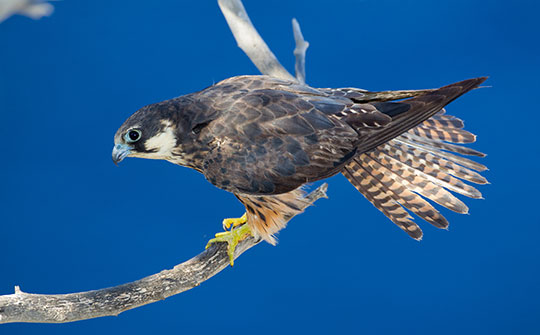
Sebastià Torrens
On fat and colours
Fat accumulation in young falcons, to which we have just referred, has until recently conditioned the effectives. It is well known that fats are the most energetic food, and therefore, the most appreciated (even when there is too much: if it were not so, obesity would not be a problem). Therefore, Eleonora’s falcon has been very present on Mediterranean tables for thousands of years. The naturalist Pliny the Elder, once procurator of Hispania Tarraconensis, wrote that there was a bird of prey in the Balearic Islands that was an honor for the table. Who if not our falcon! The isles of Tagomago and Es Vedrà have witnessed continued predation of falcon chicks at the hands of local fishermen until a few decades ago, sometimes tragically: the Uncle of one of our informants, from Sant Carles, fell from a cliff to his death, and only his skull was recovered, months later, caught in a fishing trammel stuck at the foot of the rock. Falcon chicks were prized also in Morocco: the islet of Essaouira was exhausted every season until very recently. In all likelihood nobody eats falcon chicks today, and therefore, the species has increased its population, free from millenary human predation. However, new problems have emerged, the most worrisome of which is the effect of biocides, especially some very powerful toxics used in the cultivation of table grapes in Greece, which has had catastrophic effects on some Cretan colonies.
«Chicks are copiously fed, growing rapidly and accumulating more fat than other birds of prey»
We must refer to another one of our protagonist’s distinctive features: one out of every four specimens has completely black plumage. This genetic melanism is also known in a related species, Falco concolor, which is the eastern desert equivalent, lands where they also hunt migrant passerines who have slipped beyond the barrier of Eleonora’s Falcons. There is no clear explanation for the adaptive advantage of the coloration. In general, the dark dorsal / light ventral patter is meant to be favourable to decrease visibility in an air environment (or a water environment), but it cannot be decisive, because both colorations coexist. Melanism may have some physiological advantage, and accumulating melanin might be more favourable than excreting metabolites that are related to it. Is there any relationship between melanism in falcons and in the lizards that live in the same islets? By the way, it has been documented that lizards appropriate falcons’ prey or carcass pieces in their nests, in a case of island commensalism or parasitism. But that is part of a different story.
Gschweng, M.; Kalko, E. K. V.; Querner, U.; Fiedler, W. and P. Berthold, 2008. «All Across Africa: Highly Individual Migration Routes of Eleonora's Falcon». Proceedings of the Royal Society B, 275: 2887-2896. DOI: <10.1098/rspb.2008.0575>.
Mellone, U. et al., 2012. «Ranging Behaviour of Eleonora's Falcons Falco eleonorae during Chick-rearing». Acta Ornithologica, 47: 195-198. DOI: <10.3161/000164512X662313>.
Mellone, U.; López-López, P.; Limiñana, R.; Piasevoli, G. and V. Urios, 2013. «The Trans-Equatorial Loop Migration System of Eleonora's Falcon: Differences in Migration Patterns between Age Classes, Regions and Seasons». Journal of Avian Biology, 44(5): 417-426. DOI: <10.1111/j.1600-048X.2013.00139.x>.

